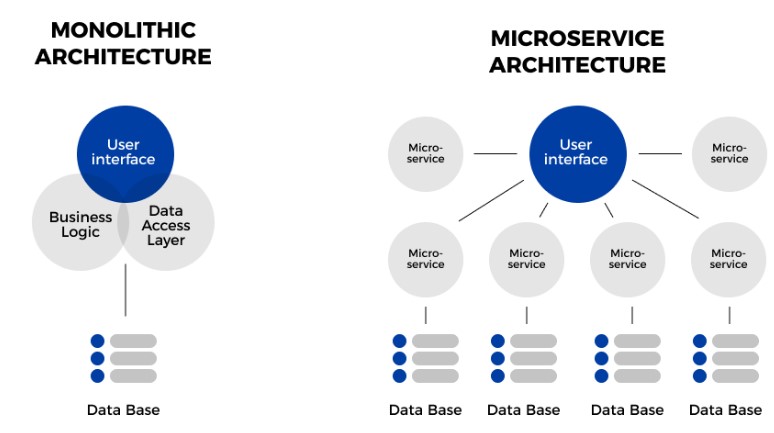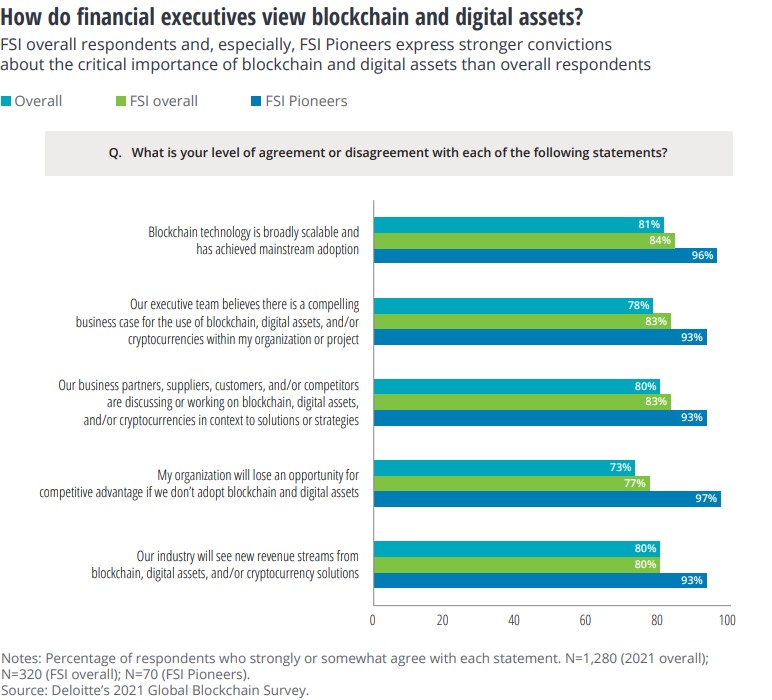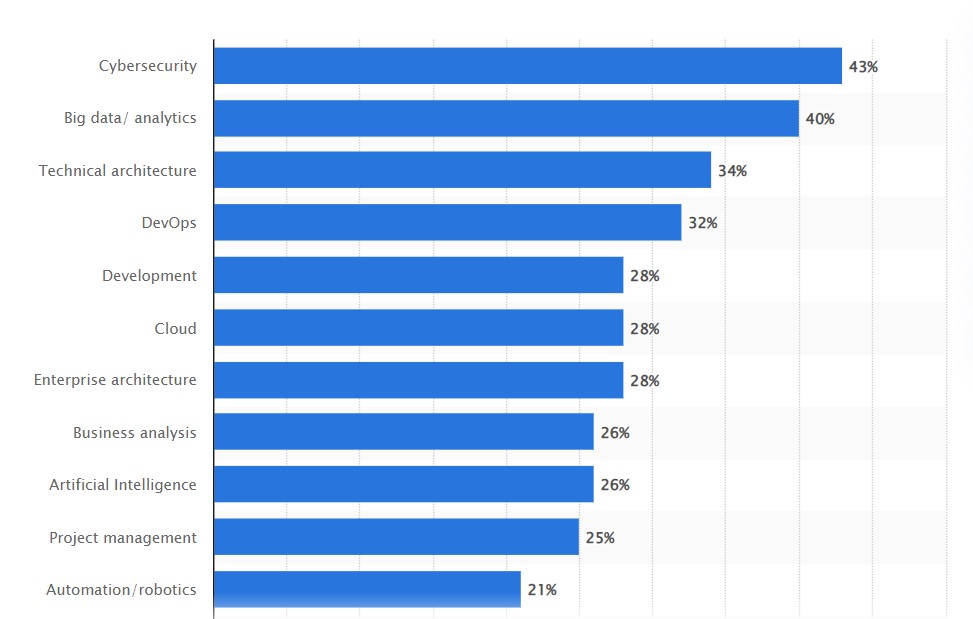11 Software Development Trends For Businesses in 2023
In the post-pandemic scenarios in 2022, software development trends have grown even more robust. In fact, the global software development market is projected to expand at a CAGR of 11.7% from 2022 to 2030.
Noticing that our clients spend more attention on software development, we’ve compiled a list of the top 11 software development trends (2023-2024) that might drive your business’s revenue.
Let’s dive right in.
Software development trends worth noting
The global business software and services market was valued at USD 429.59 billion in 2021 and is expected to expand at an 11.7% CAGR from 2022 to 2030.
The increased automation of business processes and the growing volume of enterprise data in industries such as retail, manufacturing, and healthcare are driving the market growth.
Furthermore, the rapid deployment of enterprise software and services across IT infrastructure to improve decision-making, reduce inventory costs, and increase profitability is fueling the market growth.
With such thriving in the software market, businesses should timely adopt the lastest software development trends to stay ahead of their competitors.
11 Key software development trends (2023-2024)
1. Businesses Adopt Low-Code And No-Code Development
Software development often copes with problems and setbacks.
About 20% of all software projects fail and another 52% are “challenged”.
Not to mention, the process is also incredibly expensive.
Those factors, consequently, have shed light on some companies in the software development industry to start simplifying their way of creating software.
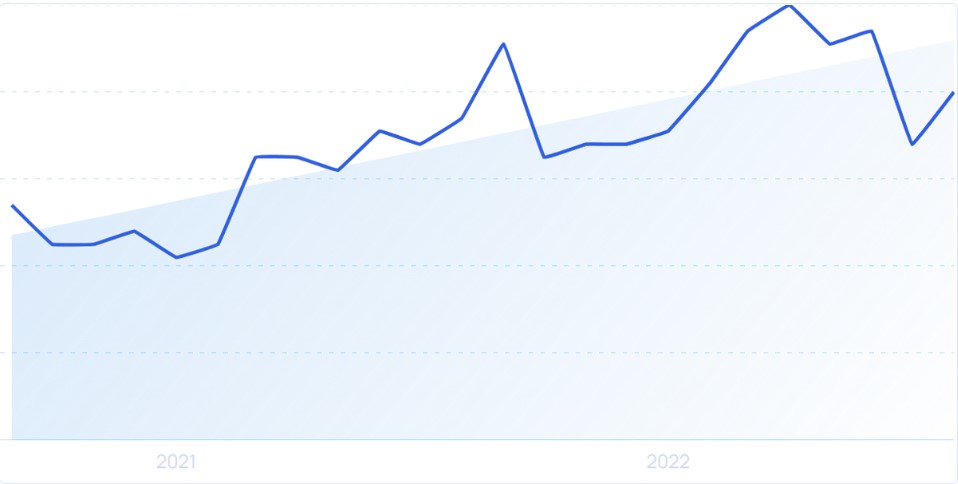
The term “low-code” has exploded and increased by 74% in search results from 2021 to 2022
As simple as its name indicates, the software developed this way does not use advanced IT knowledge or coding skills.
Therefore, it allows low-code and no-code software development to translate into easier and faster development.

Over a period of 5 years, “no-code” search grows by 8.100%
No-code platforms are more user-friendly. Instead of using traditional programming, now users can drag and drop blocks or pre-made code in a visual interface.
Over a period of 5 years, “no-code” search growth by 8.100%
Meanwhile, low-code platforms require more technical involvement, but still provide shortcuts that facilitate the software development process.
You might be interested: TOP 3 Low-Code Tools for Application Development
According to a study done by Forrester, the businesses that adopted low/no-code platforms processed more effectively than the firms using the traditional ones.
It also said that the no-code approach creates a seamless user experience for non-technical experts.
In specific, experts without coding skills can build software in the domain they know best. This enables small startups or SMEs to bring their product to the market easier than ever before.
Quickbase is an example of visual development tool (a no-code platform).
With a beautiful drag-and-drop builder, even people with little to no coding experience can automate complex processes with the click of a mouse.
Mendix and Appian are other popular low-code platforms that are worth considering.
2. Work Remotely Drives An Increase In Cloud Computing
During the pandemic, most businesses expanded remote work capabilities and experienced a huge shift in IT needs.
The pandemic passes by leading to a new working mode emerging which is hybrid working. Some still want to work remotely due to being more flexible while others choose to work at the office.
This current work landscape calls for solutions like cloud services since they can help employees work efficiently even when they’re at home.
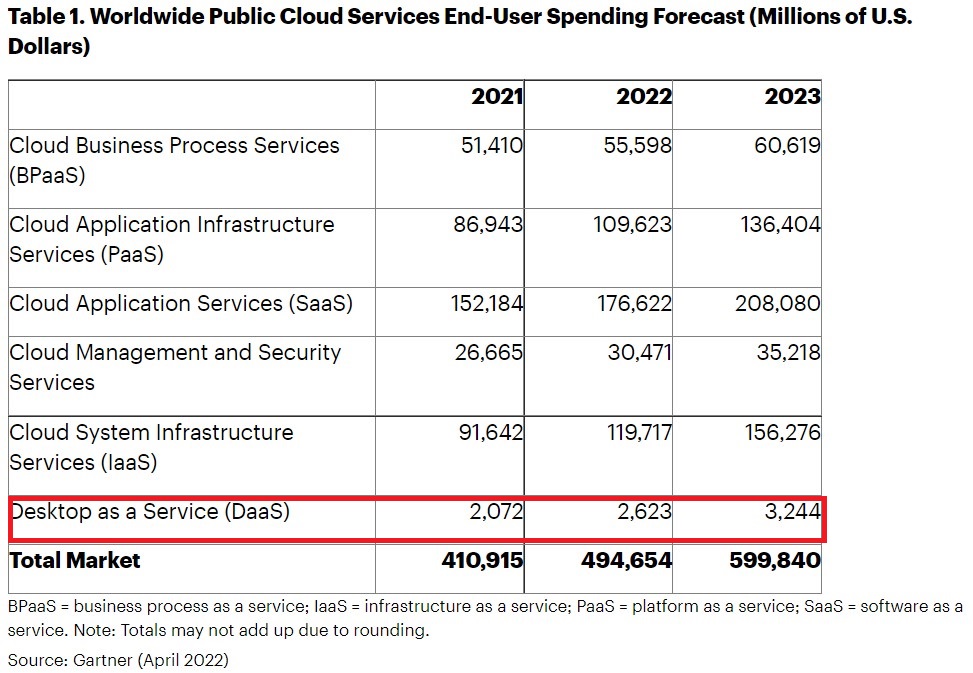
Cloud service as a software development trend
By the end of 2022, the global cloud computing market will reach $623.3 billion. By 2025, that number will push through the $800 billion mark.
Within 1 year, from 2021 to 2022, the spending on public cloud services from end-users added up by 17%. This number is forecasted to grow even faster in the year 2023.
Hybrid work has urged businesses to replace their traditional client computing solutions (desktops, in-office tools, etc) with DaaS, which is driving spending to reach $2.6 in 2022.
Due to the massive growth in this industry, demand for cloud-native software engineers has never been higher.
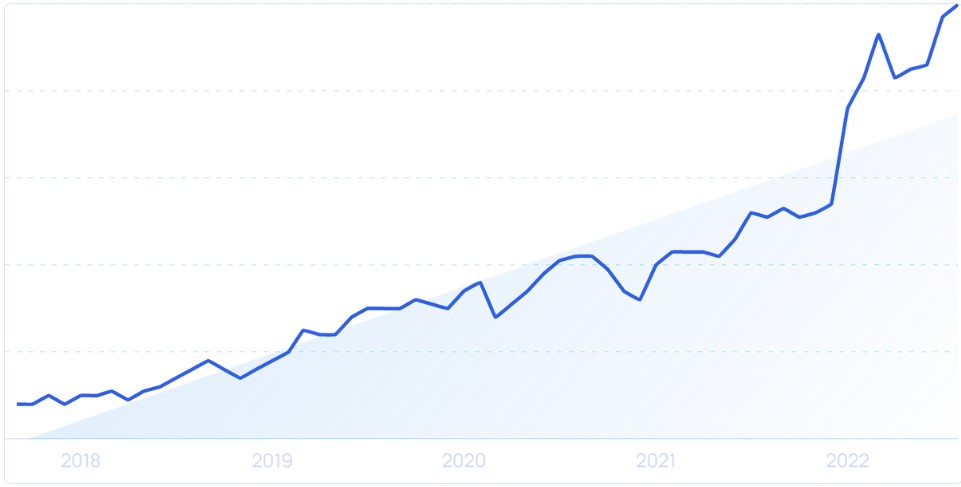
Search volume for “cloud engineering” skyrocketed with a 900% increase in a 5-year period
3. Malicious Software Development Ramps Up
In the next few years, cybersecurity will likely remain a key concern.
Especially, ransomware continues to be one of the greatest threats to businesses. That means companies will be looking for tools that help protect their assets from danger.
Within one year from 2019 to 2020, the ransomware attacks rate rapidly grew by 435%.
Ransomware payments are up too. The average payment in November 2020, calculated at $233k, had increased 31% from Q2 to Q4 2020.
Attacks caused by ransomware are devastating. One of the most popular tricks in ransomware is double extortion.
In which attackers illegally take over the company’s data for ransom and threaten the victim to leak confidential data if not have the ransom paid.
A report from IBM Security points out that businesses that fully armed themselves with security automation can save up to $3.58 million in the event of a data breach.
Many organizations who are aware of cyber security’s importance are going to invest in cyber insurance.
This indicates a rising trend for security software development that businesses stay ahead of this trend.
4. AI Adoption Accelerates
Based on the IDC’s predictions, the global AI market was projected to increase more than 16% during 2021 to $327.5 billion and to reach $500 billion by 2024.
Remarkably, after Covid-19, the rate of adoption is accelerated even more and is predicted to keep growing in the future.
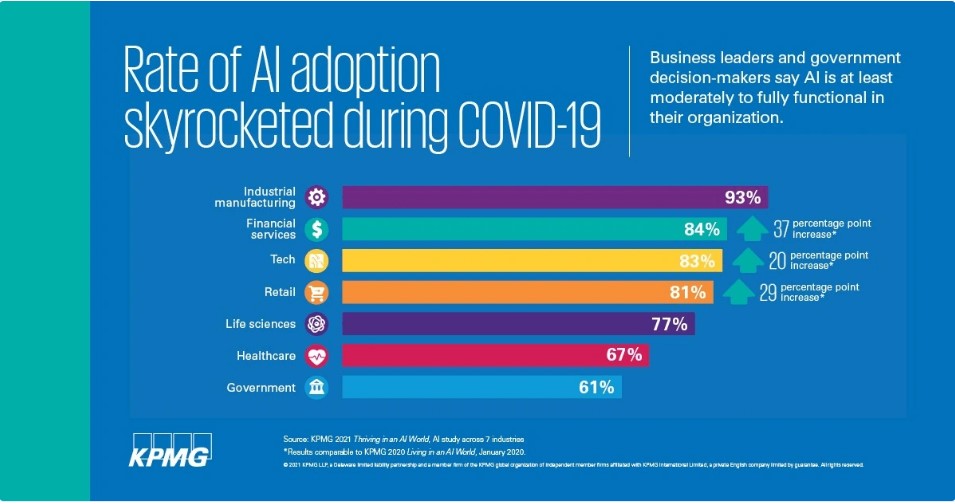
KPMG’s research shows that AI adoption has especially accelerated in the financial services industry.
The reason different industries increasingly adopt AI is that this technology helps lower costs by increasing efficiency and reducing errors.
In the banking industry alone, experts predict that AI could drive $1 trillion of additional value every year.
It also allows banks to provide the kind of hyper-personalization that customers are demanding in today’s world.
In the coming year, healthcare will be the industry that has lots of big impacts made by AI software.
A survey in March 2021 reported that about 90% of hospitals have AI strategies in place.
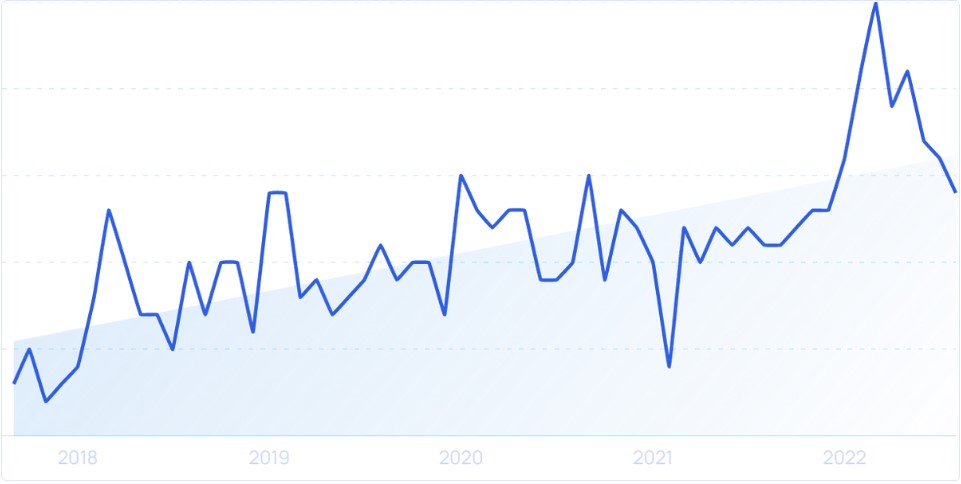
AI’s impact on the medical field is undeniable. Searches for “ai and healthcare” have increased 364% in the past 5 years.
In the business world, AI software is making an impact through Robotic Process Automation (RPA).
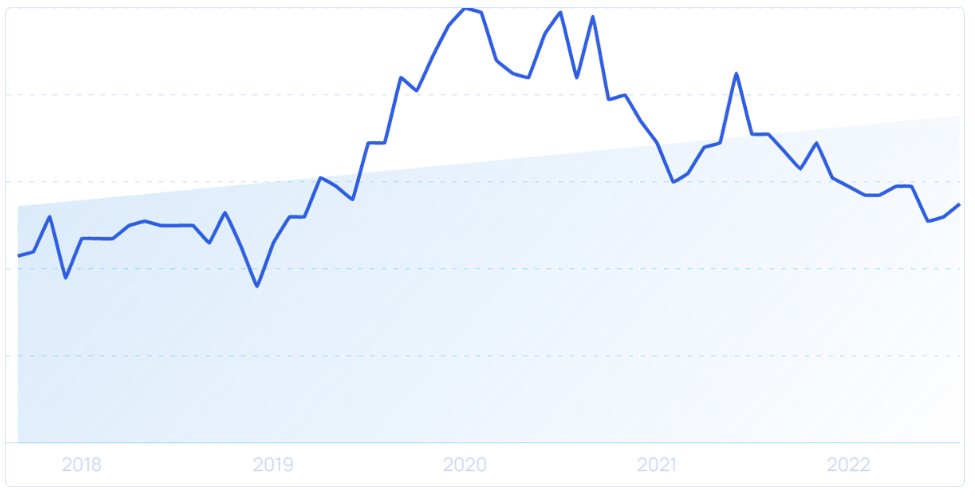
Search growth for “robotic process automation” has increased by 46% over 5-year span.
This type of technology automates mundane tasks so that skilled workers can focus on projects with higher potential value.
According to one survey, more than half of businesses are using RPA and approximately 20% are planning to use it in the next 2 years.
Some typical examples of RPA applications in 2022 are mass emails, data entry, financial planning, and lead nurturing.
5. Rust Gains Momentum
In the first few months of 2022, Rust is the programming language having a breakout
This programming language now become the second-most used language.
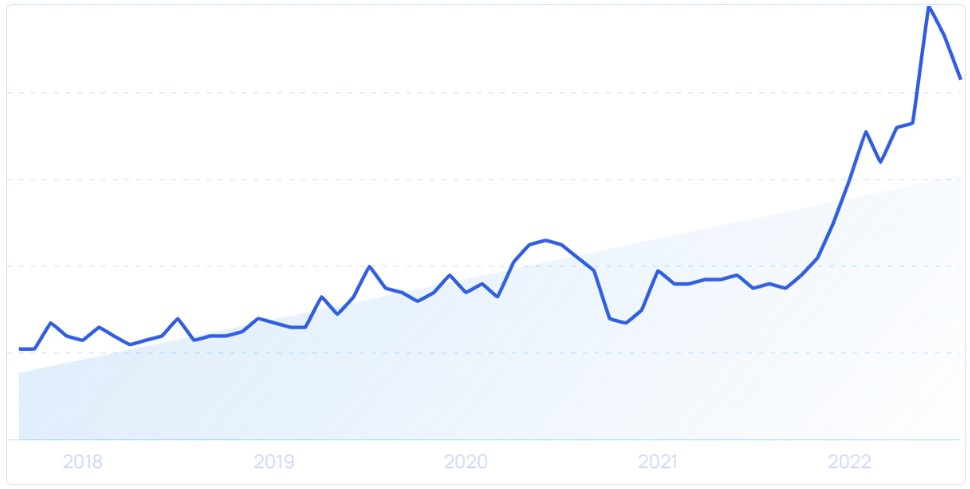
Searches for “Rust” has soared in the last 5 years with 144% increase
Rust is a system programming language that you can use to write high-performing applications.
It’s well-known for its performance and safety, especially safe currency and memory management.
In a recent survey, Rust was the second choice for the most interesting coding language to learn among users.
Some big-name players such as Facebook, Dropbox, and Amazon also use Rust in production.
6. Continued Expansion Of The IoT
The Internet of Things (IoT) is set to continue expanding in 2022 and beyond.
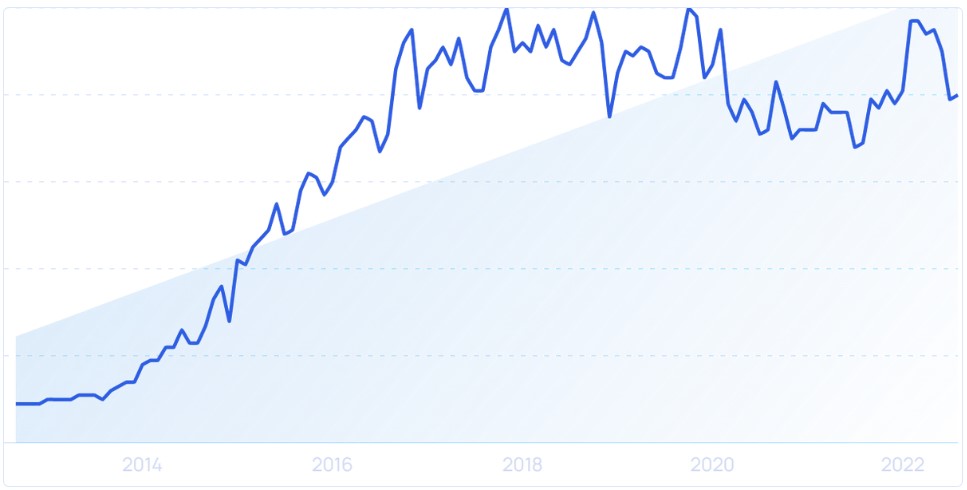
Search growth for “internet of things” appears to be on the rise once more.
Statistics show that there will be 65 billion IoT devices in 2025. That’s 6x more than in 2018.
Smart speakers, in particular, are expected to continue to grow in popularity. According to data, the market could be worth $35.5 billion in 2025.
According to Forrester, wearables and sensors that allow patients to monitor their own health at home will skyrocket in 2021 and beyond.
Data collected from patients can help doctors be more proactive in medical treatments and improve care.
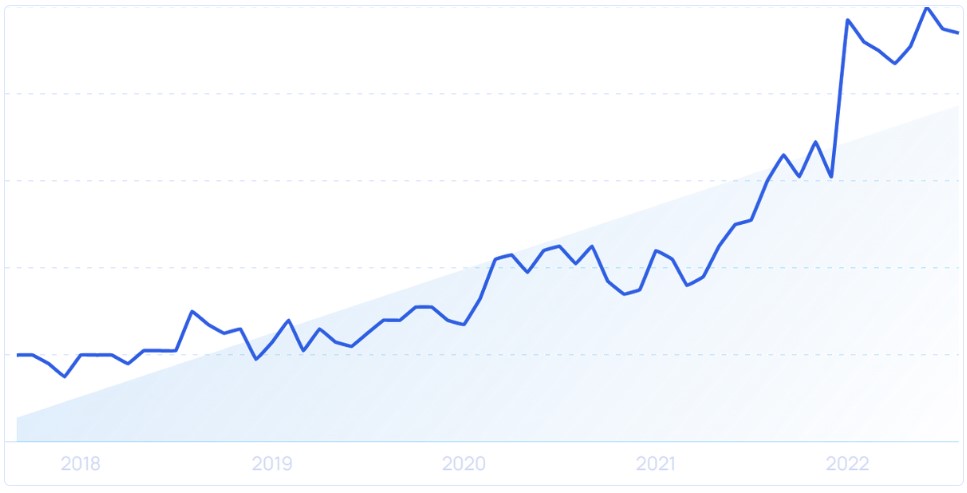
Searches for “remote healthcare” have grew 357% over the past 5 years and have remained high since then
The IoT extends far beyond its use in homes.
Bayer recently developed a low-cost IoT chip that similar to a mailing label.
This chip can be attached to any product from chemical compounds to seed packs and used for tracking purposes in the distribution process.
Not stopping in the industrial field, the applications of IoT are also in the workplace.
7. Progressive Web Apps (PWAs) Aim To Provide A Better User Experience
Normally, smartphone users often prefer having a smooth and secure app experience, however, they don’t often download apps as they take up too much of their phone’s storage.
In fact, Google pointed out that up to 50% of smartphone users choose brand’s mobile site as an alternative to an app.
Therefore, many companies who know this insight are turning to progressive web apps (PWAs) as a solution.
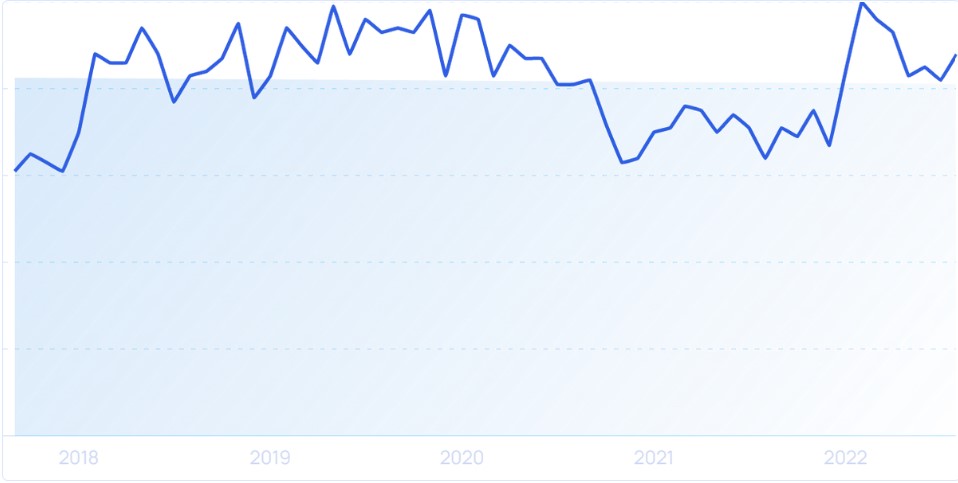
A big jump in the search volume for “progressive web apps” in early 2022
These kinds of apps are the ideal combination of standard website technology and the convenience of an app.
The PWA is much lighter than the traditional app. For example, in comparison to the native app, the PWA from Twitter only accounts for 3% of the storage of the Android app.
Similar to websites, PWAs run on HTML, CSS, and JavaScript, but one point that makes them different is PWA takes away the browser interface and borders.
PWA users can simply save the app to the home screen for use and do not need to download the whole app.
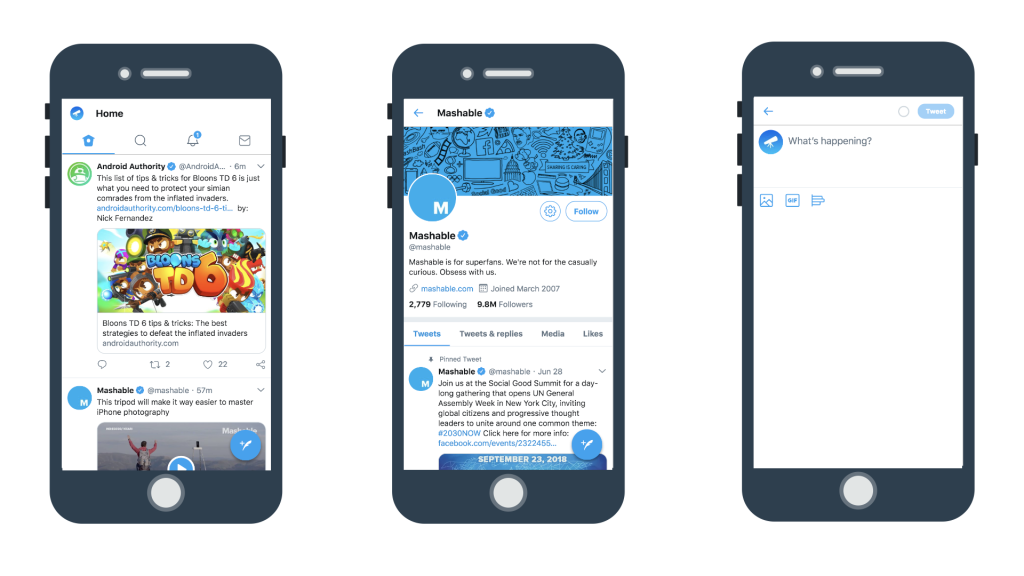
An example of PWA on Twitter
PWAs load quickly and send push notifications in the same way that native apps do. They’re also available offline because they cache data.
PWAs are becoming increasingly popular among developers because they are platform agnostic—developers do not need to create separate apps for mobile, tablet, and desktop.
PWAs save brands money in a variety of ways, including ease of development. These apps are also easier to create and less expensive to maintain.
8. Microservices Architecture Simplifies Deployment And Scaling
According to Technavio, the cloud microservices market is expanding rapidly. They predict that the CAGR will exceed 25% by 2026, adding $1.59 billion to the market value.
The microservices architecture is a novel approach to software development.
The traditional approach, monolithic architecture, involves coupling all application processes and running them as a single service.
Because the code is all grouped together, changing one process means changing the whole application. This method is neither flexible nor scalable.
On the other hand, a microservices architecture is a type of framework that allows developers to build applications that are independent of other services.
These modules can be managed and changed without affecting the other components.
This new structure eliminates the need for developers to spend time developing and maintaining applications. It also allows them to reuse their applications in other projects.
In 2021, a survey conducted by IBM revealed that 88% of its current microservices users agree that the benefits of using a microservices architecture are very important to their development teams.
87% also stated that the cost of adopting this approach is worth it.
9. Use Of Blockchain In Software Development Expands
Although the majority of the attention that blockchain technology has been getting is focused on cryptocurrency, it has potential applications in the software development industry.
More than 80% of organizations agree that blockchain and other digital assets will bring them new revenue streams.
Meanwhile, more than 73% of the respondents said that if they don’t adopt this new trend, they will lose competitive advantages.
Blockchain-oriented software (BOS) systems are extremely stable and secure. Its data is replicated and stored in a decentralized manner, which ensures its security.
There are also multiple layers of safety that help prevent unauthorized access. Users can only view and record the data, and they are not able to modify or delete it.
Another instance of blockchain-based software is a specific type of app called a decentralized application (dApp).
As referred by its name, there is no centralized place to store code or any companies to manage it. This means no middleman is required.
In other words, users no longer need third-party organizations such as Airbnb or Grab. Now they can directly access the platforms and services.
10. Companies Turn To Outsourcing In The Face Of IT Skills Shortage
Despite the robust emergence of new technologies, the shortage of skilled labor in the IT industry is preventing businesses from adopting them.
According to a Gartner report for 2021, 64% of executives say the most significant adoption barrier for their business is a lack of talent. This compares to only 4% in 2020.
According to Statista, cybersecurity and Big data/analytics are the top-two areas that are lacking Tech talents.
According to a 2022 survey, 73% of technology leaders say it’s either very or somewhat difficult to recruit tech workers and fill open positions.
By 2030, there could be 85 million unfilled jobs, costing the global economy $8.5 trillion.
To address the talent shortage, many companies are adopting non-traditional hiring methods, such as training individuals through boot camps.
In the past, software developers had to have a certain amount of academic background to be considered for positions.
But, today, almost 80% of HR professionals are accepting applications from individuals who have been trained through boot camps.
Outsourcing is another strategy used by IT departments to scale and remain agile while avoiding the headache of recruiting and the pinch of attracting new employees with high salaries.
The IT outsourcing market is expected to grow to $689 billion by 2027, from $522 billion in 2021.
11. DevSecOps Approach Integrates Security Into The Development Process
The combination of security, operations, and development (DevSecOps) is a new approach that enables organizations to develop software that is secure throughout their entire lifecycle.
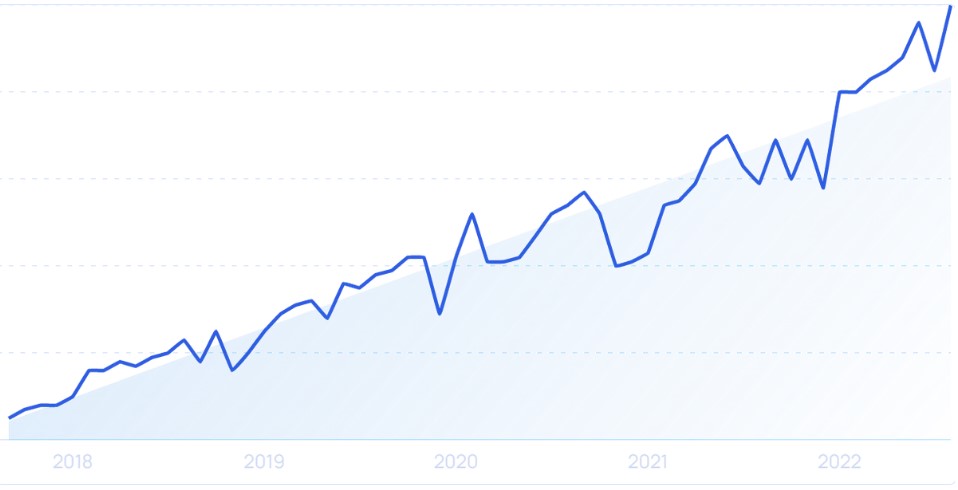
Search volume shows growing interest in “DecSecOps.”
When it comes to implementing security without slowing down development or delaying releases, DevSecOps integration is critical.
Instead of worrying about security at the end of the development process, developers can fix security flaws in code in real-time.
As a result, software that is as secure as possible is deployed as quickly as possible.
Wrap up for software development trends
We’ve wrapped up the top 11 key software development trends to outlook in 2023 – 2024.
Throughout the article, you can spot the opportunities that technologies can bring to your businesses.
Your job now is to find out which one can be your hidden blackjack to make your business shine in the competition.
About InApps:
At InApps Technology, our team of highly skilled developers focuses on crafting projects that are tailored to your business needs. Our clients love that they can benefit from our outsourcing software development services and offshore development center at the same time.
From Mobile App and Web Development, UI/UX Design, and the Offshore Development Center. Technology can be daunting, but due to our versatility, we can make things work for you.
Need to hire professional software development engineers? Reach out to our team and meet the suitable candidates for your requirements.

